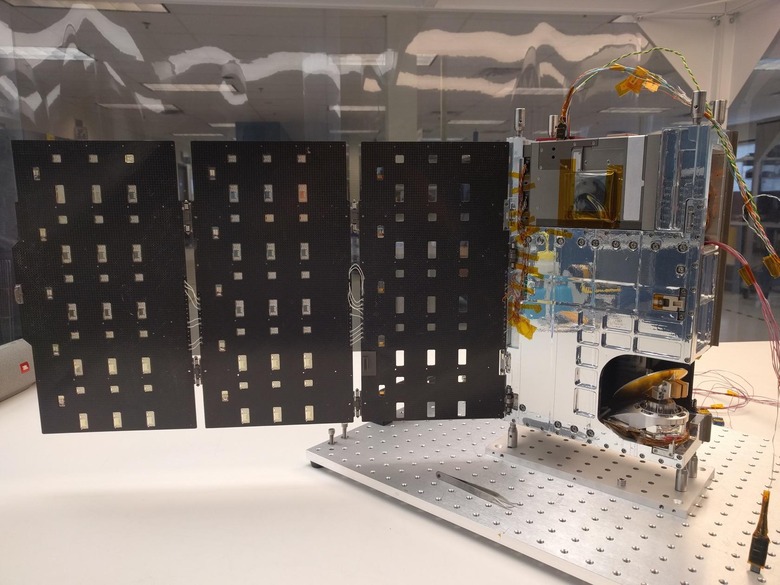These Tiny CubeSats Could Revolutionize How NASA Predicts Weather
Some of NASA's smallest cargo on the upcoming resupply launch to the International Space Station will in fact be some of its most important, with a new flock of tiny satellites paving the way for future missions. While the flight will take numerous scientific experiments and more mundane supplies to the orbiting space station, it will also count three CubeSats among its cargo.
Each will be roughly the size of a cereal box, and made up of different configurations of 4-inch cubes. After they reach the ISS, they'll be deployed into low-Earth orbit and begin collecting data. For NASA, it's a relatively low-cost, low-difficulty opportunity to test out possible future technology.
First of the three is RainCube, the first time a CubeSat has been used to carry an active radar instrument. It's effectively a precipitation-studying radar that has been shrunk down into a roughly 26 pound block, funded by NASA's Earth Science Technology Office as part of the InVEST funding project.
Once in orbit, RainCube will extend its roughly meter-wide antenna, an experiment in itself. Unlike traditional satellites, it uses Ka wavelengths to communicate: they support smaller antennas but also longer distances, with NASA claiming it could exponentially improve overall range. Using that link, RainCube will be able to beam back data on the evolving internal structure of weather systems.
The second CubeSat is CubeRRT, or the CubeSat Radiometer Radio Frequency Interference Technology Validation. It's been designed to test ways to detect and filter out radio frequency interference (RFI), which affects communications between satellites and Earth. With it, NASA hopes to refine a method to filter out RFI-corrupted data in real-time, replacing the current system whereby all of the data is transmitted and the detritus is only filtered out when it gets back to Earth, a relatively wasteful process.

Finally, there's TEMPEST-D, or Temporal Experiment for Storms and Tropical Systems Demonstration. That carries a new five-frequency radiometer built on new low-noise amplifier technologies, and has been designed to control its low-Earth altitude and position in orbit. With it, NASA believes, it could better track storms as they evolve.
NASA's vision for RainCube, CubeRRT, and TEMPEST-D is more than just a trio of tiny satellites, however. One of the problems with its current satellite network is that there simply aren't enough of them to supply all the data required for truly accurate predictions. Existing weather satellites, for example, only pass over storms on average once every three hours.
With a flock of each CubeSats, however, an exponentially greater degree of measurements could be collected. "With a train-like constellation of TEMPEST-like CubeSats, we'd be able to take time samples every five to 10 minutes to see how a storm develops," Steven Reising of Colorado State University and partners at JPL, responsible for developing TEMPEST-D, explains. That would allow much better predictions for unstable systems like hurricanes.
